Tendinitis or tendonitis is inflammation in the tendons, the thick fibrous cords that attach muscle to bone. This condition can affect any tendon, with the shoulders, elbows, wrists, knees, and heels being common sites.
Typical symptoms of tendinitis include acute pain and tenderness, which makes it difficult to move the affected joint. While it can result from sudden injuries, the primary cause of tendinitis is often repetitive motion activities that contribute to bodily wear and tear.
Treatment for tendinitis involves rest, physical therapy, and medication to alleviate pain. Sometimes, prolonged inflammation may lead to tendon tears, potentially requiring surgical intervention.
While tendinitis can impact any tendon throughout the body, certain types are more common. Common types of tendinitis named after sports or the specific area of injury include:
- Achilles tendinitis results from overuse of the Achilles tendon, the tissue band that connects the calf muscles to the heel bone at the back of the lower leg.
- Tennis elbow, also known as lateral epicondylitis, arises from tendon overload in the elbow. Tennis elbow can result in pain when you bend the wrist outwards.
- Golfer’s elbow or medial epicondylitis induces inflammation in the tendons connecting the forearm and elbow. The condition results in pain when bending the wrist towards the inside.
- Swimmer’s shoulder occurs when tendons in the shoulder get inflamed and swollen, exerting pressure on nearby bones, muscles, or other tendons.
- Patellar tendinitis is the injury to the patellar tendon that links the kneecap (patella) to the shinbone and enables knee activities like kicking, running, and jumping.
Tendinitis may result from a sudden injury, but its most common cause is repetitive actions. Tendons are crucial in facilitating repeated movements.
You are susceptible to tendinitis if you repeat the same motions during sports or work, especially if executed incorrectly. Poor technique can strain the tendon, contributing to tendinitis.
Several factors cause tendinitis, including:
- Repetitive motions, such as prolonged chopping or typing
- Poor posture
- Excessive exercise
- Injuries
- Aging
- Certain diseases like diabetes or rheumatoid arthritis
Tendinitis can also be a side effect of certain medications, including statins, cholesterol-lowering drugs, or fluoroquinolone antibiotics.
Certain factors that increase the risk of tendinitis include:
- Age: As you age, tendons become less flexible and stiff, making them more prone to injury.
- Occupations: Tendinitis is more common in roles involving repetitive movements, such as gardeners and manual laborers. Professions involving repeated motions, awkward positions, extensive overhead reaching, exposure to vibration, and forced movements elevate the risk of overuse injuries.
- Activities: Exercises and sports activities like running, tennis, and golf can lead to tendinitis.
- Medical Conditions: Certain health conditions, including diabetes, gout, kidney diseases, and rheumatoid arthritis, can amplify the risk of tendinitis.
Tendinitis symptoms in the affected tendon may vary depending on the type. Common symptoms of tendinitis include:
- Pain in the affected tendon
- Stiff joints or difficulty in joint movement
- Tenderness
- Swelling
The diagnosis of tendinitis includes:
- Physical exam includes the examination of symptoms and the affected joint to identify tenderness and a creaking sound, which happens when the tendon sheath becomes thick and inflamed.
- Imaging tests such as X-rays, MRIs, and ultrasounds of the joint and surrounding tissue are performed to confirm a diagnosis.
Tendinitis treatment aims to relieve pain and reduce inflammation. Self-care measures like rest, hot-cold therapy, and pain relief medications can help relieve early and mild symptoms of tendinitis. The treatment options for tendinitis include:
- Medications like Ibuprofen and other nonsteroidal anti-inflammatory drugs can help alleviate pain and reduce inflammation in the affected tendon and joints.
- Physical therapy exercises can help strengthen the muscles and tendons.
Manipulating and massaging the affected area reduces pain and accelerates the recovery. - Corticosteroid injections are steroids administered around the affected tendon to ease inflammation and pain.
- Surgery might be needed in severe cases of tendon injury, particularly when the tendon has torn away from the bone.
The treatment of tendinitis is a slow and long process. Seeking early medical attention is crucial to avoid complications and for proper recovery. Dr. Ulric Bigby specializes in non-surgical and surgical tendinitis treatments and offers personalized care and guidance to facilitate healing.
Schedule your consultation online or get in touch with Dr. Bigby at one of his three locations:


